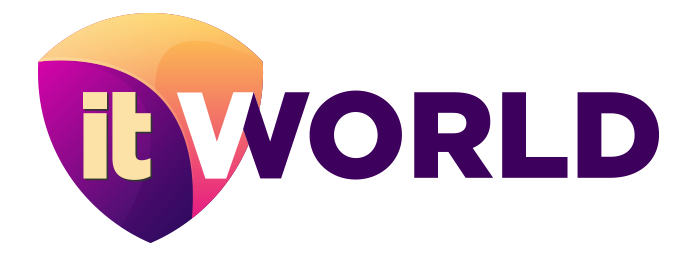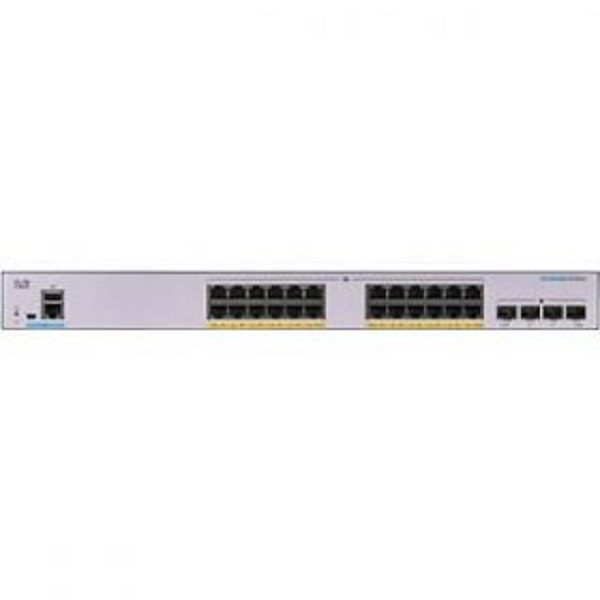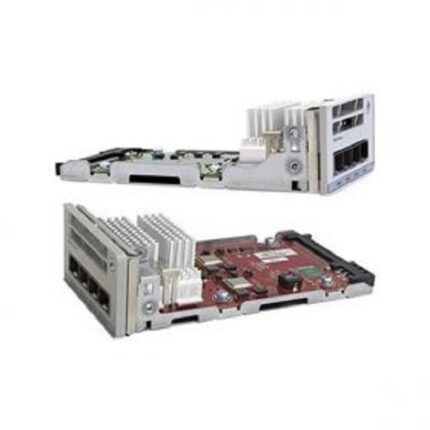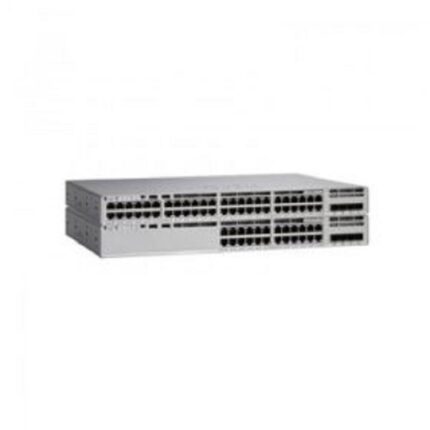|
Model Name |
Capacity in Millions of Packets per Second (mpps) (64-byte packets) |
Switching Capacity in Gigabits per Second (Gbps) |
|||||
|
CBS350-24P-4G |
41.66 |
56.0 |
|||||
|
Layer 2 Switching |
||||||||
|
Spanning Tree Protocol |
Standard 802.1d Spanning Tree support Fast convergence using 802.1w (Rapid Spanning Tree [RSTP]), enabled by default Multiple Spanning Tree instances using 802.1s (MSTP); 8 instances are supported Per-VLAN Spanning Tree Plus (PVST+) and Rapid PVST+ (RPVST+); 126 instances are supported |
|||||||
|
Port grouping/link aggregation |
Support for IEEE 802.3ad Link Aggregation Control Protocol (LACP) ● Up to 8 groups
● Up to 8 ports per group with 16 candidate ports for each (dynamic) 802.3ad link aggregation
|
|||||||
|
VLAN |
Support for up to 4,094 VLANs simultaneously Port-based and 802.1Q tag-based VLANs; MAC-based VLAN; protocol-based VLAN; IP subnet-based VLAN Management VLAN Private VLAN with promiscuous, isolated, and community port Private VLAN Edge (PVE), also known as protected ports, with multiple uplinks Guest VLAN, unauthenticated VLAN Dynamic VLAN assignment via RADIUS server along with 802.1x client authentication CPE VLAN |
|||||||
|
Voice VLAN |
Voice traffic is automatically assigned to a voice-specific VLAN and treated with appropriate levels of QoS. Auto voice capabilities deliver network wide zero-touch deployment of voice endpoints and call control devices |
|||||||
|
Multicast TV VLAN |
Multicast TV VLAN allows the single multicast VLAN to be shared in the network while subscribers remain in separate VLANs. This feature is also known as Multicast VLAN Registration (MVR) |
|||||||
|
VLAN Translation |
Support for VLAN One-to-One Mapping. In VLAN One-to-One Mapping, on an edge interface customer VLANs (C-VLANs) are mapped to service provider VLANs (S-VLANs) and the original C-VLAN tags are replaced by the specified S-VLAN |
|||||||
|
Q-in-Q |
VLANs transparently cross a service provider network while isolating traffic among customers |
|||||||
|
Selective Q-in-Q |
Selective Q-in-Q is an enhancement to the basic Q-in-Q feature and provides, per edge interface, multiple mappings of different C-VLANs to separate S-VLANs Selective Q-in-Q also allows configuring of Ethertype (Tag Protocol Identifier [TPID]) of the S-VLAN tag Layer 2 protocol tunneling over Q-in-Q is also supported |
|||||||
|
Generic VLAN Registration Protocol (GVRP)/Generic Attribute Registration Protocol (GARP) |
Generic VLAN Registration Protocol (GVRP) and Generic Attribute Registration Protocol (GARP) enable automatic propagation and configuration of VLANs in a bridged domain |
|||||||
|
Unidirectional Link Detection (UDLD) |
UDLD monitors physical connection to detect unidirectional links caused by incorrect wiring or cable/port faults to prevent forwarding loops and black holing of traffic in switched networks |
|||||||
|
Dynamic Host Configuration Protocol (DHCP) Relay at Layer 2 |
Relay of DHCP traffic to DHCP server in different VLAN; works with DHCP Option 82 |
|||||||
|
Internet Group Management Protocol (IGMP) versions 1, 2, and 3 snooping |
IGMP limits bandwidth-intensive multicast traffic to only the requesters; supports 2K multicast groups (source-specific multicasting is also supported) |
|||||||
|
IGMP Querier |
IGMP querier is used to support a Layer 2 multicast domain of snooping switches in the absence of a multicast router |
|||||||
|
Head-of-Line (HOL) blocking |
HOL blocking prevention |
|||||||
|
Loopback Detection |
Loopback detection provides protection against loops by transmitting loop protocol packets out of ports on which loop protection has been enabled. It operates independently of STP |
|||||||
|
Layer 3 |
||||||||
|
IPv4 routing |
Wirespeed routing of IPv4 packets Up to 990 static routes and up to 128 IP interfaces |
|||||||
|
IPv6 routing |
Wirespeed routing of IPv6 packets |
|||||||
|
Layer 3 Interface |
Configuration of Layer 3 interface on physical port, Link Aggregation (LAG), VLAN interface, or loopback interface |
|||||||
|
Classless Interdomain Routing (CIDR) |
Support for classless interdomain routing |
|||||||
|
RIP v2 |
Support for Routing Information Protocol version 2 for dynamic routing |
|||||||
|
Policy-Based Routing (PBR) |
Flexible routing control to direct packets to different next hop based on IPv4 or IPv6 Access Control List (ACL) |
|||||||
|
DHCP Server |
Switch functions as an IPv4 DHCP server serving IP addresses for multiple DHCP pools/scopes Support for DHCP options |
|||||||
|
DHCP relay at Layer 3 |
Relay of DHCP traffic across IP domains |
|||||||
|
User Datagram Protocol (UDP) relay |
Relay of broadcast information across Layer 3 domains for application discovery or relaying of Bootstrap Protocol (BOOTP)/DHCP packets |
|||||||
|
Standards |
||||||||
|
Standards |
IEEE 802.3 10BASE-T Ethernet, IEEE 802.3u 100BASE-TX Fast Ethernet, IEEE 802.3ab 1000BASE-T Gigabit Ethernet, IEEE 802.3ad Link Aggregation Control Protocol, IEEE 802.3z Gigabit Ethernet, IEEE 802.3ae 10 Gbit/s Ethernet over fiber for LAN, IEEE 802.3an 10GBase-T 10 Gbit/s Ethernet over copper twisted pair cable, IEEE 802.3x Flow Control, IEEE 802.1D (STP, GARP, and GVRP), IEEE 802.1Q/p VLAN, IEEE 802.1w Rapid STP, IEEE 802.1s Multiple STP, IEEE 802.1X Port Access Authentication, IEEE 802.3af, IEEE 802.3at, IEEE 802.1AB Link Layer Discovery Protocol, IEEE 802.3az Energy Efficient Ethernet, RFC 768, RFC 783, RFC 791, RFC 792, RFC 793, RFC 813, RFC 826, RFC 879, RFC 896, RFC 854, RFC 855, RFC 856, RFC 858, RFC 894, RFC 919, RFC 920, RFC 922, RFC 950, RFC 951, RFC 1042, RFC 1071, RFC 1123, RFC 1141, RFC 1155, RFC 1157, RFC 1213, RFC 1215, RFC 1286, RFC 1350, RFC 1442, RFC 1451, RFC 1493, RFC 1533, RFC 1541, RFC 1542, RFC 1573, RFC 1624, RFC 1643, RFC 1700, RFC 1757, RFC 1867, RFC 1907, RFC 2011, RFC 2012, RFC 2013, RFC 2030, RFC 2131, RFC 2132, RFC 2233, RFC 2576, RFC 2616, RFC 2618, RFC 2665, RFC 2666, RFC 2674, RFC 2737, RFC 2819, RFC 2863, RFC 3164, RFC 3176, RFC 3411, RFC 3412, RFC 3413, RFC 3414, RFC 3415, RFC 3416, RFC 4330 |
|||||||
|
IPv6 |
||||||||
|
IPv6 |
IPv6 host mode; IPv6 over Ethernet; Dual IPv6/IPv4 stack IPv6 neighbor and router discovery (ND); IPv6 stateless address autoconfiguration; Path Maximum Transmission Unit (MTU) discovery Duplicate Address Detection (DAD); ICMP version 6 DHCPv6 stateful client IPv6 over IPv4 network with Intrasite Automatic Tunnel Addressing Protocol (ISATAP) tunnel support USGv6 and IPv6 Gold Logo certified |
|||||||
|
IPv6 QoS |
Prioritize IPv6 packets in hardware |
|||||||
|
IPv6 ACL |
Drop or rate limit IPv6 packets in hardware |
|||||||
|
IPv6 First Hop Security |
RA guard ND inspection DHCPv6 guard Neighbor binding table (snooping and static entries) Neighbor binding integrity check |
|||||||
|
Multicast Listener Discovery (MLD v1/2) snooping |
Deliver IPv6 multicast packets only to the required receivers |
|||||||
|
IPv6 applications |
Web/SSL, Telnet server/SSH, ping, traceroute, Simple Network Time Protocol (SNTP), Trivial File Transfer Protocol (TFTP), SNMP, RADIUS, syslog, Domain Name System (DNS) client, Telnet Client, DHCP Client, DHCP Autoconfig, IPv6 DHCP Relay, Terminal Access Controller Access Control System Plus (TACACS+) |
|||||||
|
IPv6 RFCs supported |
RFC 4443 (which obsoletes RFC2463): ICMP version 6 RFC 4291 (which obsoletes RFC 3513): IPv6 address architecture RFC 4291: IPv6 addressing architecture RFC 2460: IPv6 specification RFC 4861 (which obsoletes RFC 2461): neighbor discovery for IPv6 RFC 4862 (which obsoletes RFC 2462): IPv6 stateless address autoconfiguration RFC 1981: path MTU discovery RFC 4007: IPv6 scoped address architecture RFC 3484: default address selection mechanism RFC 5214 (which obsoletes RFC 4214): ISATAP tunneling RFC 4293: MIB IPv6: textual conventions and general group RFC 3595: textual conventions for IPv6 flow label |
|||||||





